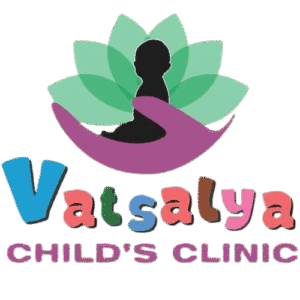
Certain principles of skin care have to be emphasized such as gentle cleansing, adequate hydration and moisturization of the skin, preventing friction and maceration in body-folds, and protection from irritants and bright sunlight.
1. Baby bath
Lukewarm water baths (temperature <37ºC) are given in the first few weeks of life. However, bathing can be delayed in certain situations such as winter. In a low birth weight infant, bathing should be delayed till the cord has fallen off. The bath of the newborn should not last more than 5 mins. Prolonged bath increases the hydration of the skin and reduces the threshold for friction. For the initial bath, sterile or potable clean water is sufficient. Soaps and cleansers are best avoided in the first few weeks of life. The neonate should be bathed in a warm room, and should be dried quickly and thoroughly from head to toe, followed by wrapping in a warm dry towel and placing next to the mother.
Ideally, a baby soap or cleanser should be devoid of fragrance and colours to avoid irritation. Syndets or synthetic detergents have a pH closer to normal skin and are less irritating and milder than soaps. A distinct advantage is that as they do not alter the pH of the skin and the skin microflora remains unaltered, moisturizers are to be added.
Healthy term newborns and infants can be washed using cleansers of neutral or slightly acidic pH, which have a gentle surfactant, be chemically and physically stable, and should contain an emollient. Again this should be used minimally in the newborn period.
2. Baby Powders
Although they are useful to absorb moisture during hot and humid weather and prevent maceration in skin folds, they are best avoided in the newborn period. Excessive use can also lead to blockade of sweat duct pores and can lead to miliaria formation.
The mother should be advised to frequently change napkins or diapers. The skin should be dried and aired between napkin changes. Warm water and soft cotton wool can be used to wipe napkin area. The bottoms should be wiped from front to back.
3. Care of the Scalp
Application of mineral or vegetable oil limits the spread of lesions in infantile seborrheic dermatitis. Shampoos should have minimal time of contact with the scalp to avoid irritant dermatitis. The pH of the shampoo should be close to that of tears and should be non-irritating to the baby’s eyes.
4. Other Areas
After birth of the newborn, the umbilical cord dries out and drops off within five to ten days. Topical agents are best avoided to the umbilical cord. Nails should be cut and kept short and clean. Cotton swabs soaked in boiled water should be used to clean eyes very gently.
Coconut oil is preferable for oil massage in newborn as it is time-tested and owing to its small molecular structure, allows easy use and is ideal for dry skin. Olive oil is also useful. All vegetable oils should be used cautiously during hot weather as they can cause increased occlusion of sweat pores in newborns, and irritant follicullitis.
5. Massage and touch therapy
Mustard oil was the most common (99.7%) oil used for massage. Approximately 15-20 mL of oil is heated and garlic and spices are occasionally added. The baby is massaged with oil over the entire body and the massage is done 1-3 times in a day. The perception of the society about massage in newborn is that it prevents cold/cough, provides warmth, keeps the skin smooth and makes the bones stronger.
6. The Process of Neonatal Massage
A room with soft light, warm temperature, and low noise levels is ideal. Massage should be given between the feeds and ideally 45 min to 1 hour after a feed to avoid regurgitation or vomiting of the feed. It should involve the entire body starting from head, neck, trunk and extremities. A firm stroke with flat of fingers with moderate pressure is used during massage therapy. Massage to be formed in 2 phases of tactile stimulation: first phase, the baby is placed prone and 12 strokes of 5 sec each is provided starting from head, neck, shoulder to buttocks; second phase the baby is placed supine 12 strokes of 5 sec each was given starting from face, cheeks, chest, abdomen, upper limb, lower limb, palms and soles. Third phase consists of kinesthetic stimulation in which alternate flexion and extension movements are performed at major joints: ankle, knee, elbow and shoulder. The massage can be interrupted for a few minutes when the baby passes stool/urine or cries excessively.
7. The Process of Neonatal Massage
A room with soft light, warm temperature, and low noise levels is ideal. Massage should be given between the feeds and ideally 45 min to 1 hour after a feed to avoid regurgitation or vomiting of the feed. It should involve the entire body starting from head, neck, trunk and extremities. A firm stroke with flat of fingers with moderate pressure is used during massage therapy. Massage to be formed in 2 phases of tactile stimulation: first phase, the baby is placed prone and 12 strokes of 5 sec each is provided starting from head, neck, shoulder to buttocks; second phase the baby is placed supine 12 strokes of 5 sec each was given starting from face, cheeks, chest, abdomen, upper limb, lower limb, palms and soles. Third phase consists of kinesthetic stimulation in which alternate flexion and extension movements are performed at major joints: ankle, knee, elbow and shoulder. The massage can be interrupted for a few minutes when the baby passes stool/urine or cries excessively.
8. Oil Massage
Massage of newborn may be done using a lubricant (oil) to avoid friction between the surfaces. The local community in Nepal perceives mustard oil as the best for its smell, taste and color. The choice of the oil depends upon the availability, cost and safety. Sunflower oil, coconut oil, and sesame oil are also commonly used for massage.

360 DEGREE ULTIMATE GUIDE
This book is your at-home pediatrician—guiding parents from pregnancy care to newborn essentials. It covers breastfeeding, common concerns, when to seek help, and even tiny details like nail care. A complete medical and emotional care guide for new parents.
